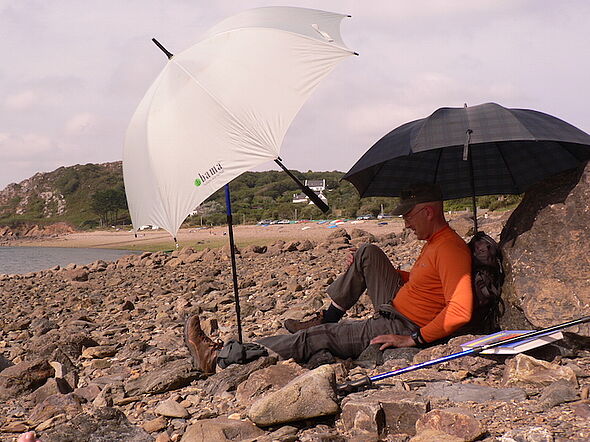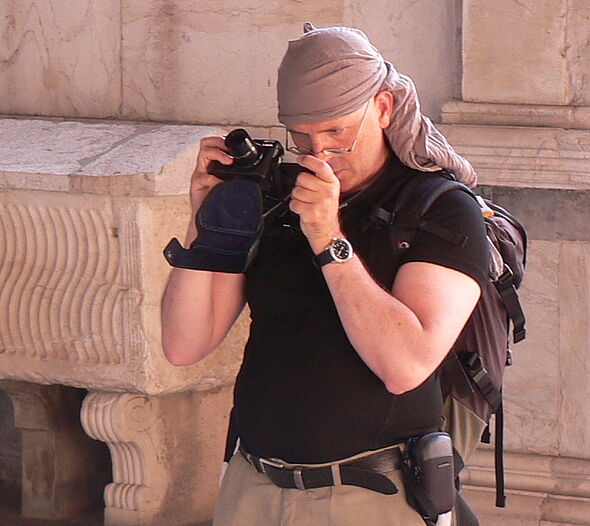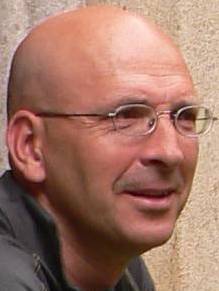Instructions: how we work

|
Here you learn how we structure our coaching and psychotherapy.
Session structuring
Orientierung in unserer Zusammenarbeit
A patient spoke positively about her therapy progress:
"I had to structure myself: reflect, keep a therapy journal, set small goals and carry them out by the next session... Just by writing down what I experienced, my successes and failures, a continuous, comprehensible development process emerged... Through the homework assignments, for example, I learned to get things done more quickly"
Your concern for today's session
Preparation for the session

|
Before the session, you should take time at home to go within yourself and reflect on how your process has been since the last session. Have you achieved your goals (see reflection) for this period? To what extent? What did you not succeed in? What is the reason for that? What came up additionally? On this basis, you should then select and prepare as precisely as possible what your concern is for today's session before entering the coaching and therapy room. You spend 5 minutes before entering the practice focusing on these questions. In the session room, you should first address bureaucratic and organizational matters (such as documents from cost bearers) on your own without being prompted. Under no circumstances should you bring up these matters at the end at 10 minutes before when you should leave the session room. That would be too late. The session ends at 10 minutes before. After discussing the organizational matters, I read my notes and your reflection from the last session aloud and we then discuss your concern for today's session. This reading aloud cognitively and emotionally brings to our consciousness the point where we left off in the process. At this point, we thereby anchor the common thread of our development process for today's session. Because our work extends along a common thread. Based on your efforts in the period since the last session to achieve your goals with the help of your homework assignments (see reflection), we then continue our work today. We work very consciously and intelligently, solution-oriented and goal-oriented.
Our session for psychotherapy & coaching
Interactive work
The coaching and behavioral therapy session always has two parts for us, both in individual and group treatment:
- The first part lasts 50 minutes and takes place interactively with the therapist and coach, or with the group.
- The second (reflective) part lasts 10 minutes and takes place next to the practice immediately after the interpersonal work with Egon Molineus in writing. This is called "reflection".
The reflection
Follow-up work
Writing the reflection with goal setting and homework assignments IMMEDIATELY AFTER THE SESSION with Egon Molineus is the foundation of your behavioral therapeutic and coaching work that takes place between sessions. Without reflection + goal setting + homework assignments, there would be no behavioral therapy and no change-oriented coaching here. This instrument is the structure on which the entire building of the change process rests. This infrastructure enables you to design and realize your change process and ensures success. If you were only interested in having conversations with the therapist and coach and gaining insights without doing this additional work, then you would be in the wrong place at Egon Molineus's practices. The reflection is written immediately after the interpersonal work with Egon and sent 15 minutes after leaving the practice via the Proton email address before continuing on. It is the second part of the session, a reflective part for internalization and for planning and organization. One can carry out the reflection, for example, in a restaurant or under a tree near the practice or in the car. The temporal proximity between session and reflection is extremely important so that the contents are still very fresh and spontaneous and so that you work for the entire period between session and session on the structured, goal-oriented modification projects. Therefore, it is necessary that you reserve this time in your calendar when you make an appointment. The reflection is written as text. You voluntarily commit to this work structure with our therapy/coaching contract because you want to achieve your behavior modification with the help of structure. A practice discipline is necessary here. I first read your reflection aloud together with you in the next individual session, or (after group sessions I read it alone). The reflection (maximum 12 lines for individual sessions and 30 for group sessions) has 4 parts: Part 1 = reflective assessment: You verbalize in writing the most important contents of the interactive session for you, such as the following. Understand that the following list is only orientations and not questions that you would all have to answer in the reflection.
- Feelings/emotional reactions in the interaction with the topics and with the person of the therapist or with the other group members.
- Considerations, insights, developed new solutions
- What did I learn from this?
- What does this show me?
- Impulses, blockades, inhibitions, obstacles, long- and medium-term goals...
- How exactly did I inhibit myself in this concrete interaction?
- Why didn't I dare?
- How did I mess up this opportunity?
- Important internal interactive phenomena: identification, projection, rationalization
- What does she do similar to me? Where do I know this about myself?
- Important external interactive actions
- Decisions
- Where no more? Where again? What else?
- ...
- The reflection is not a protocol of events in the session. Reflecting here means thinking and deepening and mirroring the inner (thought, feeling, experience) happenings. This is not a summary of the session for the secretariat.
- The reflection is not a place to tell what one did not tell in the session. There is only the session itself for that. Either you say it immediately in the session or otherwise you say it then in the next session, but not in the reflection. Otherwise we would have a misuse of the reflection as a back door or as an attachment file to the session. Part 2: The LIFE DIRECTION. On the basis of the assessment of the session, an impulse arises in me that animates me in a direction. This is your inner impulse based on your experience in the session. It is momentary, not for the whole life.
Part 3: The GOAL. This is a small goal that I will definitely achieve by the next session. The first step in the life direction. I plan this very MODESTLY. Modesty is here the basis of actual change. Based on the insights and impulses in Part 1, you set a very small, positive goal that you will have achieved one hundred percent before the next session. Also in group therapy. Behavioral therapy and change-oriented coaching are the implementation of a self-modification project in small steps. This intelligent, positively expressed goal setting is project management. You take time to establish the best small positively expressed goal. The goal is to be sought IN MYSELF, I want to achieve something IN MYSELF.
- Our intelligence cannot achieve the opposite of negative goals (Don't think of pink elephants!). Therefore, you should not set negatively expressed goals. In other words:
- I ACHIEVE THIS! (correct).
- However: NOT THIS! (wrong goal).
- Or: LESS OF... (wrong goal).
- However: MORE OF... (correct).
- The goal is what you will achieve IN MYSELF in the short period. It's about a small step toward the life direction.
Part 4: The HOMEWORK ASSIGNMENT. To achieve the above short-term goal, you establish a homework assignment. The homework assignment is an action that you carry out before the next session. By carrying out the homework assignment, the goal is achieved one hundred percent. Also in group therapy.
- Both the goal and the homework assignment must be operationalizable (measurable). This means that you can exactly measure to what extent the goal is achieved and to what extent the homework assignment was carried out.
- Goal and homework assignment are here always:
- very small (behavioral therapy and change-oriented coaching work in small steps)
- completely realistically achievable by the next session
- are defined precisely, are very concrete
- YOU ACHIEVE THESE WITHOUT MAKING YOURSELF DEPENDENT ON OTHER PEOPLE. THE ACHIEVEMENT LIES ENTIRELY IN YOUR HANDS
- are expressed positively.
- We don't work on utopias here. We only want to sum up successes here. We don't want to create failures. We want to accumulate successes week after week. The sum of successes produces a feeling of self-efficacy. The experience of self-efficacy builds self-confidence and self-assurance and hope, helplessness and hopelessness gradually disappear. You should then reward and reinforce yourself for your successes.
- In the next session, it should then be analyzed why a homework assignment and goal setting was possibly only partially achieved, contrary to what was planned. Problem-solving strategies are used interactively here. Or it should be mentioned and reinforced that the goal was achieved and how.
- Through this constant, weekly training, you should be enabled to set goals for changing your disorder yourself and achieve them completely. This training should enable you to become your own therapist and your own coach, so that you no longer need therapy and coaching.
- The acceptance of behavioral therapy requires the following prerequisites to a sufficient degree:
- Capacity for reflection
- Active motivation for change
- Capacity for change
- Active continuous effort and engagement
- Behavioral therapy and change-oriented coaching are a practicing procedure that is prepared in the sessions and carried out between sessions. This practice is called "behavioral experiments" in learning psychology. You can guarantee that you will only achieve your overall therapy goal through active practice of your intermediate goals between sessions. This means deep work on your feelings, changing your thought patterns and firmly rooting new action patterns.
- You then transmit this reflection to me IMMEDIATELY AFTER THE SESSION:
- After individual sessions: As text using your alias email, which is transmitted to me with end-to-end encryption. Sending the reflection signals the end of the session.
- After group sessions: Your reflection is part of your entire group progress report, which you send one day after the completion of group therapy to therapist and consultant Egon Molineus together with the subsequent process report.
Goals
Goal setting & goal achievement
- A goal is something you absolutely want to achieve WITHIN YOURSELF.
- At the beginning of our therapy or coaching process, you establish in your mandate which goals you want to achieve.
- PREPARATION: Before each session, you determine which goal you want to get closer to in this session.
- FOLLOW-UP WORK: After each session, you define -
- Your life direction (impulse)
- Your small goal WITHIN MYSELF until the next session, which you will achieve one hundred percent alone before the next session. You will refine the goal in your reflection until you have defined the small, modest, down-to-earth goal very precisely.
- To define a goal, verbalize it in writing, design it visually, classify it as a vision... To imagine what it looks like when one has achieved it! That is the seed of change. That is the motivation to act (task).
- Because as long as you answer "I don't know" or "no idea," you don't make progress... And you are confronted with this in our laboratory. As soon as YOU start doing pull-ups, you acquire new coping strategies in your intelligence, you strengthen your executive functions.
- The coach conveys models, ideas and inspirations to you. You are nourished and strengthened with input. The coach promotes you and gives you transparent feedback, mirrors what he sees to you, and offers you challenges. You are autonomous in such a way that you either do pull-ups or abandon the process as failed and continue to suffocate in your stagnation. Therefore, you must learn to design the pull-ups each time with so little weight that you can manage it. Then you can gradually increase the weight. Evolution means adaptation, development, change and mastery.
- To move a weight, you need a point (anchor) that holds firm and where you can apply force. And you need this force. We call it resource. You always build on the resources that you yourself possess. Identify the necessary resource for this at this moment and act with it!
- In our training, you practice defining these processes of goal setting and task setting in an increasingly differentiated way. The development of this skill is the best investment for your future. You become an expert in problem solving. Here you learn how to design and realize project management. Applied to one's own person, this means SELF-MANAGEMENT.
Project management
Self-modification project
- Divide a goal into small sub-goals.
- Structure the process between goals.
- Plan and act intelligently.
contact Egon Molineus
If you would like to schedule an appointment at my practice for psychotherapy in Hamburg Altona Ottensen & psychotherapy Hohwacht Plön Holstein, then click on inquiry









